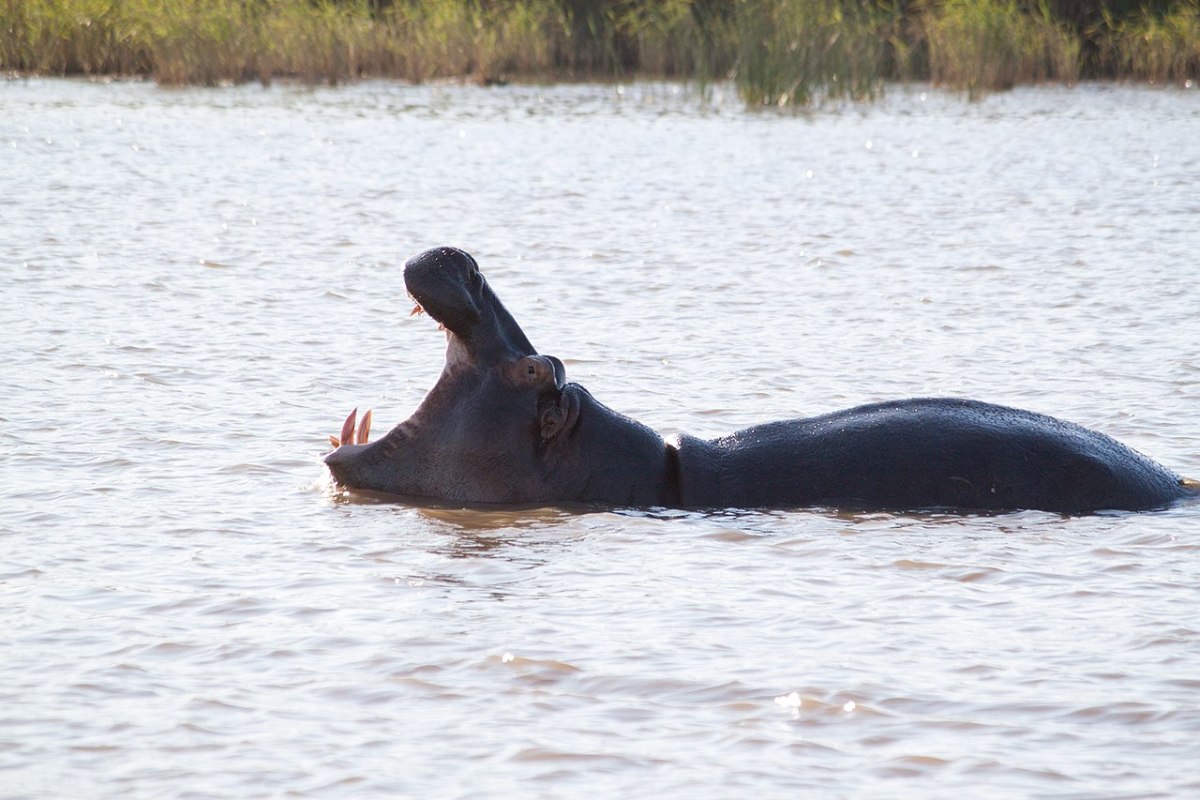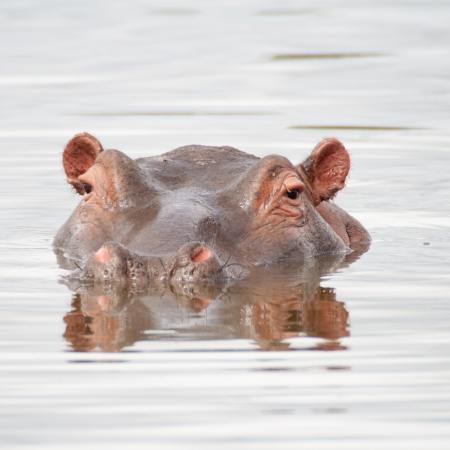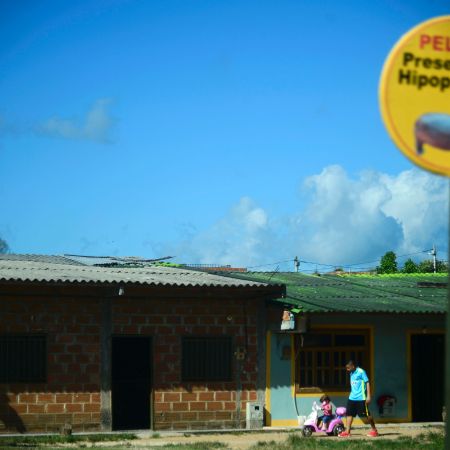During his heyday as a drug kingpin, Pablo Escobar made a habit of purchasing exotic animals. Unfortunately for the citizens of Colombia, the 4 hippopotamuses that were part of his collection migrated into the larger ecosystem after Escobar’s downfall. Why is this cause for alarm, you may ask. While hippos can look congenial and mellow from a distance, they are actually one of the most terrifying mammals out there.
This is what a hippo’s skull looks like. You’ll note that that image could easily pass for the head of a dragon or heavy metal cover art, as opposed to the model for adorable animated creatures or popular kids’ games. According to a BBC report, hippos kill 500 people annually in Africa, making them the most dangerous large land mammal on the planet.
Now, as a result of reproduction, Escobar’s original 4 hippos have become 80. You can probably figure out why the citizens of Colombia are not thrilled about this.
A new report from CNET explores the full environmental impact of these 80 hippos. Beyond the obvious danger of having giant, potentially lethal animals lurking in the wilds, the presence of the creatures has had other adverse effects on the environment:
It turns out the hippo poop is fertilizing harmful algae and bacteria. This can lead to problematic algae blooms similar to red tides, which cause illness in humans and animals, according to the study.
Given the way the population has increased already, it’s not hard to anticipate the hippos becoming even more numerous in the future — which may lead to further environmental ill effects. It’s a worrying situation on a number of levels.
Subscribe here for our free daily newsletter.
Thanks for reading InsideHook. Sign up for our daily newsletter and be in the know.
















